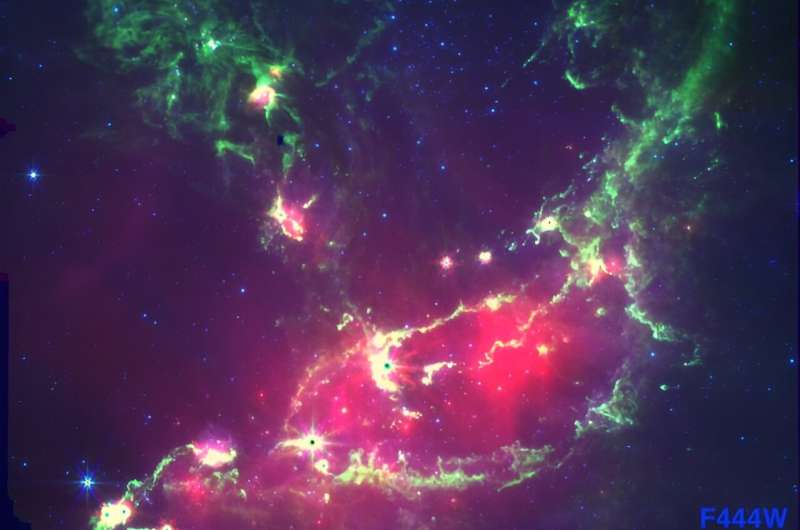May 3, 2024 report
This article has been reviewed according to Science X's editorial process and policies. Editors have highlighted the following attributes while ensuring the content's credibility:
fact-checked
preprint
trusted source
proofread
Astronomers inspect population of young stellar objects in open cluster NGC 346

Using the James Webb Space Telescope (JWST), an international team of astronomers has explored young stellar objects (YSOs) in an open cluster known as NGC 346. The study, published April 24 on the preprint server arXiv, yields crucial information about the properties of YSO population in this cluster.
In general, YSOs are stars in early stages of evolution; in particular, protostars and pre-main sequence (PMS) stars. They are usually detected within dense molecular clusters, which are abundant in molecular gas and interstellar particles.
At a distance of some 202,000 light years away from Earth, NGC 346 is a young open cluster and the brightest star-forming region in the Small Magellanic Cloud (SMC). The cluster has a complex star formation history, with multiple populations identified—from massive, evolved stars to low-mass YSOs.
The group of astronomers led by Nolan Habel of NASA's Jet Propulsion Laboratory (JPL) decided to take a closer look at stellar populations of NGC 346, especially its YSO content. For this purpose, they employed JWST's Near Infrared Camera (NIRCam) and MidInfrared Instrument (MIRI).
"In this paper, we present JWST imaging data of NGC 346 from 1.15–25.0 µm and provide an overview of the populations in the region, particularly the young populations, as determined from photometric analysis," the researchers wrote.
Initially, Habel's team detected a total of 203,891 unique sources in NGC 346 using NIRCam and MIRI. Afterward, they identified 196 young stellar objects and pre-main sequence (PMS) stars out of this sample, with a high degree of confidence suitable for further spectroscopic studies.
Furthermore, the astronomers identified a population of 833 objects in NGC 346 showing significant mid-infrared excess. These objects are preferentially co-located with regions of diffuse dust and gas, which suggests that many of them may be YSOs.
The researchers performed spectral energy distribution (SED) fitting on 77 sources, which resulted in the identification of 23 of them as young stellar objects with a high degree of certainty.
According to the paper, these 23 YSOs showcase a wide spread of sizes, as their radii vary from 0.14 to 82.32 solar radii, while their masses are between 0.95 and 4.15 solar masses. The bolometric temperatures of these objects range from 2,051 to 17,930 K.
The authors of the paper noted that the least massive young stellar object from the sample, designated CN202153, is the lowest-mass extragalactic YSO confirmed to date. They added that near-infrared spectroscopic studies with JWST should be conducted in order to further constrain the nature and properties of the 23 YSOs identified in NGC 346.
More information: Nolan Habel et al, Young Stellar Objects in NGC 346: A JWST NIRCam/MIRI Imaging Survey, arXiv (2024). DOI: 10.48550/arxiv.2404.16242
Journal information: arXiv
© 2024 Science X Network





















